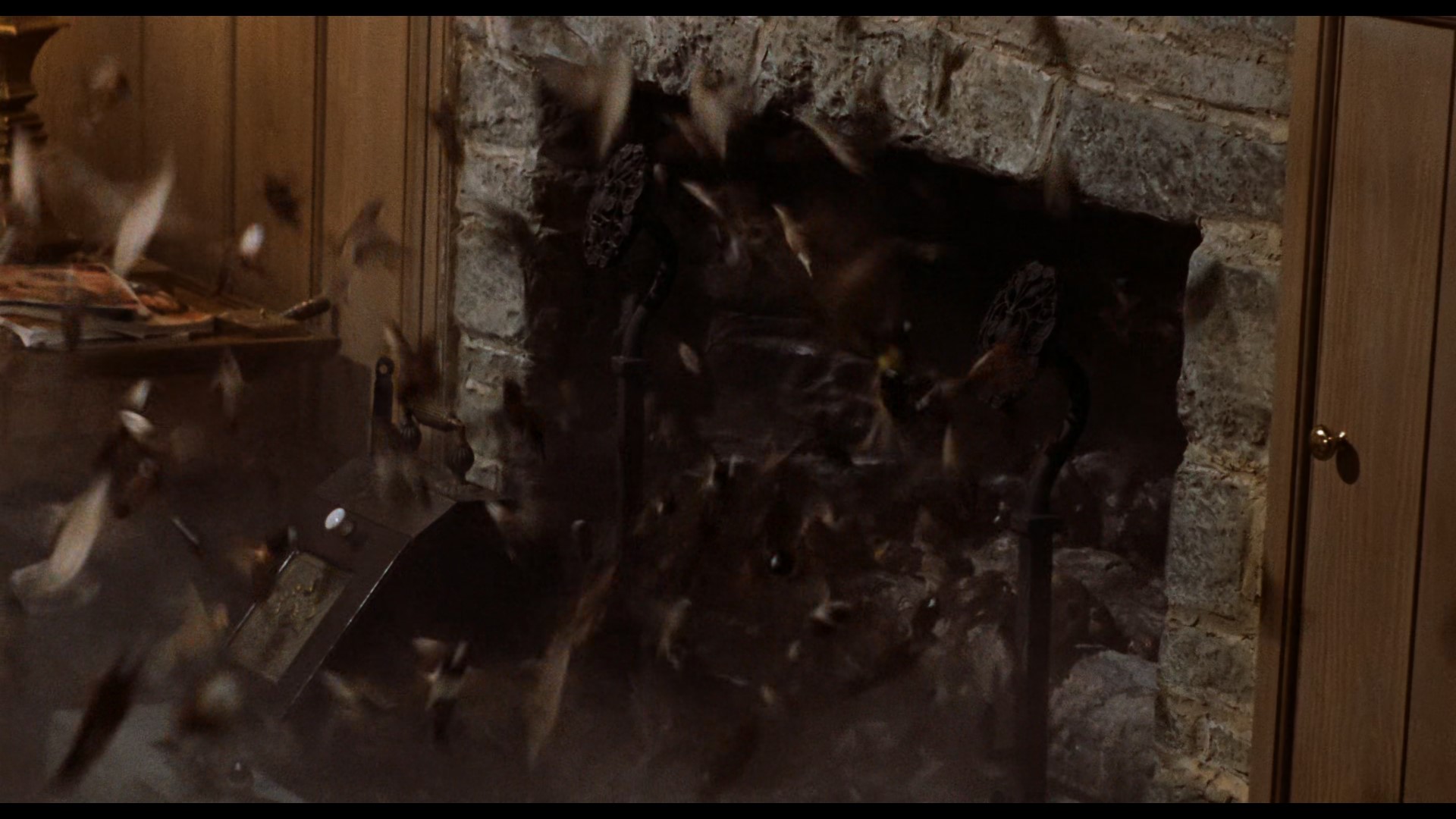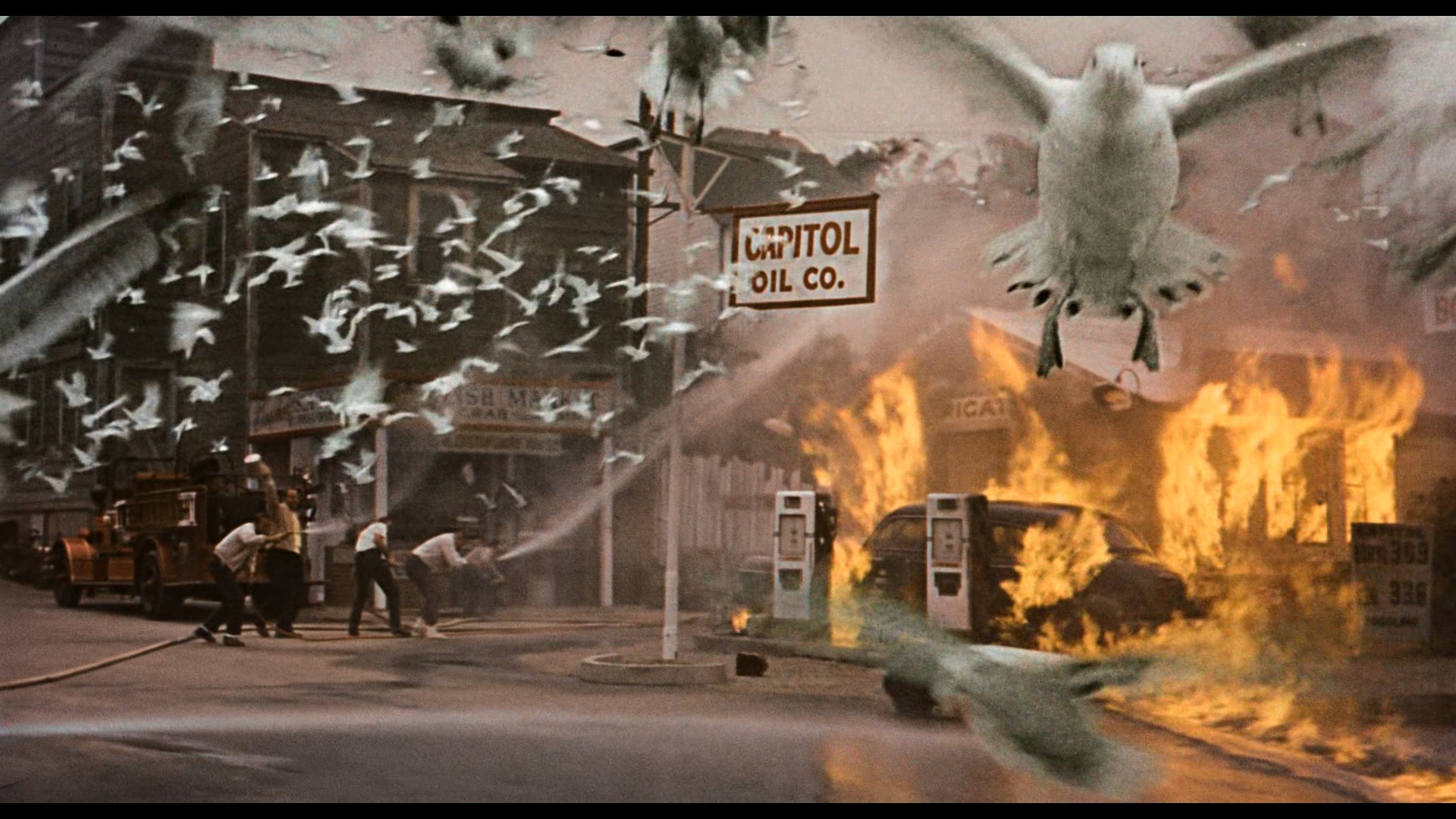Alfred Hitchcock’s The Birds explores the relationship between capitalism and nature through the mysterious circumstances of a bird attack on humanity, and through its complex interpretation and intense suspense, it conveys a message that is relevant to modern society.
Alfred Hitchcock is considered a master of commercial film art in the field of thriller and mystery. Within his thrillers, several methods of creating suspense stand out. First, they usually feature an attractive blonde woman who actively drives the story and attracts the male protagonist, whose life runs counter to the prejudices against women at the time. These female characters make a strong impression on the audience and are an important element in creating the unique tension of Hitchcock’s films. Second, Hitchcock reveals information or dangers to the audience that the protagonist is unaware of, while at the same time, the movie unfolds as if nothing is happening. This creates a thrill for the audience along with concern for the protagonist’s safety. Third, keep the story simple but powerful. Rather than a complicated narrative structure, a clear progression of events helps the audience immerse themselves in the story. Fourth, he introduces a technique called the “MacGuffin,” which starts the story and creates suspense, but is not clearly explained in the end. Hitchcock’s technique is also evident in The Birds. For example, in the early scenes of The Birds, the everyday tranquility of the characters’ lives is gradually transformed into tension, demonstrating Hitchcock’s careful approach to building suspense.

When looking at the narrative of the movie The Birds on a macro level, the biggest question is “Why do birds attack humanity?” This question is the MacGuffin of the movie, as there must be a reason for the birds to start attacking, but this reason is not revealed in the end, only the damage caused by the bird attacks. There are three possible interpretations of this. The first is that the bird attack is related to the original novel. In the original novel, the birds descending from the sky and the sudden but widespread damage they cause symbolized the Nazi bombing of England in World War II. Although Hitchcock didn’t draw heavily from the original, it’s possible that the symbolism of the bird element was somewhat inspired by the original. Another interpretation is that the film is a satire on the sudden expansion of capitalism in the United States in the 1960s. The protagonist, Mrs. Daniels, is a bourgeois woman, the daughter of a wealthy family whose father owns a prominent newspaper. As she moves from San Francisco to the rural town of Bodega Bay, the onslaught of the birds can be interpreted as the beginning of the onslaught of capitalism. Finally, the bird attacks in the film can be seen as simply random and uncaused violence, which Hitchcock may have intended to emphasize how unpredictable and beyond human understanding the forces of nature are.
The next, more micro-level factor is the objects and characters in the movie. First of all, the parakeets at the beginning of the movie stand out. I think the parakeets symbolize Mrs. Daniels and Mitch, who play a prank on Mitch by pretending to be an employee when he comes to buy a parakeet. In the first place, the parakeet symbolizes love and affection, but more importantly, Mrs. Daniels is sexually attracted to Mitch and goes looking for him with the parakeet. Furthermore, Mrs. Daniels is constantly dressed in green, which matches the color of the parakeet. Furthermore, Mitch’s first conversation with Mrs. Daniels is about his playful revenge on her for breaking the window, which suggests that Mrs. Daniels herself represents the bird. It’s safe to say that the window she broke in the past is a metaphor for the window the birds are breaking in the present. And when Mitch’s mother blames Mrs. Daniels for causing the birds to attack Bodega Bay, she reminds the audience that Mrs. Daniels represents the end of capitalism or the inappropriate abuse of nature. This conflict between Mitch’s mother and Mrs. Daniels symbolizes the clash between capitalism and traditional values, which may reflect the changing values and tensions in American society at the time. The most prominent suspense here is the transformation of what the bird symbolizes, as in the conversation between Mrs. Daniels and Mitch, the bird is represented as a symbol of love and affection, but ultimately as a symbol of brutal violence. The second interpretation also focuses on the relationships between the characters, many of which are problematic. Mrs. Daniels’ mother has left the house with another man, Mitch’s mother is strangely obsessed with her son, and her relationship with Annie, who was brought to town from San Francisco by her mother, is broken. From this, we can infer the twisting of relationships that capitalism produces. The prevalence of capitalism in American society at the time led to many people chasing after money, which sometimes led to alienation and obsession between people. Examples include Mitch’s mother being alienated by Mitch who went out to make money, Annie being drawn to him but ultimately alienated, and Mrs. Daniels being drawn to him again. These distorted relationships are more than just personal conflicts; they serve as an important device to reveal broader issues facing modern society: individualism, alienation, and the changing nature of humanity. As you can see, Hitchcock’s Birds has the most concise story and themes of any of his films, but the overall message, the reasoning behind the characters and their relationships, is three-dimensional. This is probably the reason why the suspense in his movie is more intense.

After watching this movie, the biggest emotion I felt was bewilderment. The most curious question in the movie, why the birds attack, was never answered. Moreover, the birds attacked children, women, men, and the elderly. As is typical of Hitchcock’s suspense, I was still left with questions after the movie ended, so instead of choosing one of the two aforementioned interpretations, I concluded that the movie had both meanings. There are two reasons for this conclusion. First of all, the film’s capitalism aspect was not enough for me to understand the film solely in terms of the caged birds, but rather the revenge of nature against humans, as the birds’ attack on the humans, who were confined to their homes and even infiltrated the cages of the birds, was a striking contrast to the relationship between nature and humans, and the small town of Bodega Bay, which contrasted with Mrs. Daniels’ social status. The film is relevant in the modern world because capitalism has still transformed human society, and humans still use nature for their own needs without hesitation. Furthermore, this complex interpretation is possible because Hitchcock doesn’t just deal with horrifying events, but also asks the social and philosophical questions behind them. A recurring line in the movie is that birds are naturally peaceful and docile, and would never attack humans if they didn’t attack them first. The fact that even the most gentle creatures can become hostile due to situational factors is something that I think human society needs to continue to pay attention to, reflect on, and practice in the future. In the end, Birds is not just a horror movie, but a work that explores the social unrest of the time and the complex relationship between humans and nature, and it still conveys important messages today.
 I’m a blog writer. I want to write articles that touch people’s hearts. I love Coca-Cola, coffee, reading and traveling. I hope you find happiness through my writing.
I’m a blog writer. I want to write articles that touch people’s hearts. I love Coca-Cola, coffee, reading and traveling. I hope you find happiness through my writing.